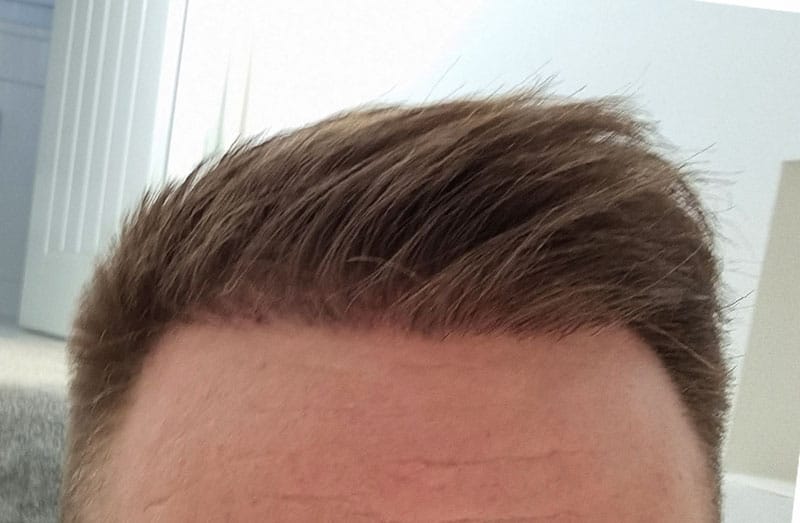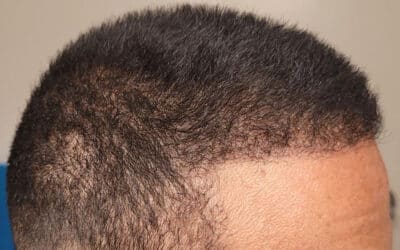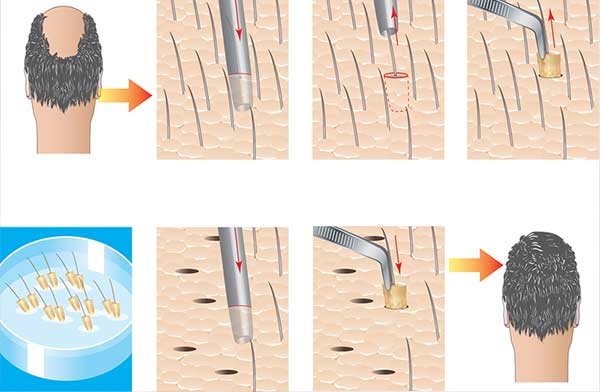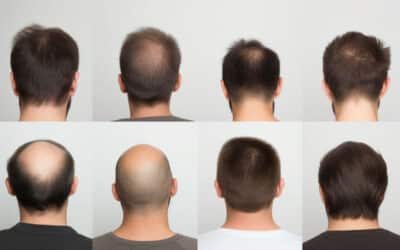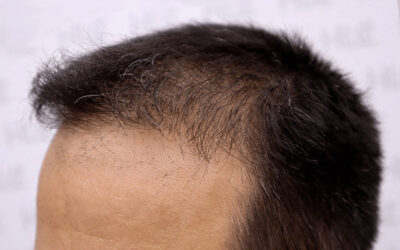FUE When Can I Wear a Hat?
Wondering about FUE When Can I Wear a Hat? You’re not alone! As hats are a very common part of people’s lives, many hair transplant patients want to wear a hat. And there’s a good chance hair restoration patients rely on hats more than others. After all, they may have used hats in the past to hide their hairloss. It may feel odd not to wear a hat.
If you’re looking to know when you can wear a hat after an FUE transplant, rest assured. You’ve come to the right place!
Table of Contents:
- What is FUE Hair Transplant?
- When Can I Wear A Hat After A FUE Hair Transplant?
- How Long Does It Take For The Results Of A FUE Hair Transplant To Show?
- What Are The Alternatives To A FUE Hair Transplant?
- How Much Does A Fue hair transplant Cost?
- FAQs in Relation to Fue When Can I Wear a Hat?
- Conclusion
What is FUE Hair Transplant?
FUE hair transplant is a minimally invasive procedure that involves harvesting individual follicular units from the donor area of the scalp and implanting them into areas where there is balding or thinning.
The goal of FUE hair transplant is to restore natural-looking, permanent results with minimal scarring.
What is FUE Hair Transplant?
Follicular Unit Extraction (FUE) hair transplantation is a type of surgical procedure used to treat male and female pattern baldness. During this procedure, individual follicles are extracted from an area on the scalp known as the donor site and then transplanted into areas that have experienced significant thinning or balding.
This technique can be used to cover large areas of baldness or just small patches depending on the patient’s needs. It typically takes several hours for a single session but may take multiple sessions if more coverage is desired.
Benefits of FUE Hair Transplant:
The main advantage of FUE hair transplants compared to other types of procedures, such as strip grafts and plug grafts, is that it does not leave any visible scarring at either the donor or recipient sites due to their minimally invasive nature. Furthermore, since we only harvest individual follicles during this process instead of entire strips like in traditional methods, recovery time tends to be much shorter.
Most patients can return to their normal activities within a week post-surgery rather than having weeks off work as they would need with other techniques. Additionally, no stitches are required for an FUE transplant. This means there will also be less post-operative pain involved when compared with traditional methods that require sutures for closure after surgery has been completed.
Risks and Complications Of Fue Hair Transplant:
FUE Hair Transplant is a great solution for those looking to restore their hair and regain confidence. Nevertheless, it is essential to be aware of when donning a hat post-procedure can be done in order to secure optimal outcomes. Let’s look at timing, precautions, and types of hats to avoid after a FUE Hair Transplant.
When Can I Wear A Hat After A FUE Hair Transplant?
Wearing a hat after an FUE hair transplant is an important part of the healing process. It helps protect your scalp from sun exposure and other environmental elements. It also keeps your newly transplanted follicles safe and secure. However, it’s important to know when you can start wearing hats again so that you don’t risk damaging your new hair. After all, you don’t want to cause any complications with the procedure.
Timing for Wearing Hats After A FUE Hair Transplant: Generally speaking, most doctors recommend waiting at least two weeks before wearing a hat after having an FUE hair transplant.
This gives your scalp time to heal properly and allows the transplanted follicles to become firmly rooted in their new location. During this time period, it’s best to avoid any type of headwear as much as possible until given clearance by your doctor or surgeon.
Precautions To Take When Wearing Hats After A FUE Hair Transplant:
Once cleared to wear hats again, there are some precautions to taken in order to ensure optimal results from the procedure.
Make sure that whatever type of hat you choose fits snugly but comfortably on your head. Wear it without being too tight or restrictive around the area where we placed the grafts. Additionally, avoid hats made out of rough fabrics such as wool or cotton. These could irritate sensitive skin around the grafted area and cause inflammation or infection if worn too soon after surgery.
Types Of Hats To Avoid After A FUE Hair Transplant:
Certain types of hats should be avoided altogether during recovery from an FUE hair transplant due to their potential for causing irritation or damage to newly transplanted follicles and surrounding tissue areas on your scalp.
Baseball caps are one example. They often fit tightly over areas where grafts have been placed which can lead them becoming dislodged before they have had enough time to take root properly in their new location. Other types of hats such as beanies may contain coarse fibers. These could irritate delicate skin around newly implanted hairs if worn too soon following surgery.
It is important for anyone who has recently undergone an FUE hair transplant procedure to understand when they can safely begin wearing hats again, as well as what kind of precautions need to be taken in order to do so correctly. Doing so will help ensure optimal results from this popular form of permanent hair loss solution.
How Long Does It Take For The Results Of A FUE Hair Transplant To Show?
The results of an FUE hair transplant can vary greatly depending on the individual and the procedure. It may take some time for the final results of an FUE hair transplant to be apparent.
Typically, it can take several months before they are fully visible. The timeline for seeing results from an FUE hair transplant is as follows:
Factors That Affect The Results Of A FUE Hair Transplant:
There are many factors that can affect how quickly you will see results from your FUE hair transplant.
Age, healthiness, genetic makeup, lifestyle choices (e.g., smoking/alcohol consumption), pre-operative meds, and the proficiency of your practitioner can all impact how rapidly you will witness outcomes from your FUE hair transplantation procedure.
Typically, it takes around three months before any visible changes in appearance start to become apparent. During this time period, some shedding of existing hairs may occur. However, if this continues beyond six weeks post-surgery, further medical attention should be sought out. If necessary, consult with the doctor or surgeon who performed the procedure initially.
The results of an FUE hair transplant can vary depending on several factors, but with proper care and patience, you can expect to see the full results within 12-18 months. Now let’s look at what alternatives are available if an FUE hair transplant isn’t right for you.
What Are The Alternatives To A FUE Hair Transplant?
If you are looking for a permanent hair loss solution, but aren’t sure if FUE hair transplant is the right option for you, there are other alternatives available. Research non-invasive and invasive strategies to decide which one most suits your prerequisites.
Alternative Options to FUE
PRP
Platelet Rich Plasma treatments involve taking a sample of your own blood, spinning it down to separate the platelets which contain healing properties that can help with stimulating new hair growth when injected into areas where there has been significant shedding or thinning of hairs.
SMP
Scalp micropigmentation involves using tiny needles filled with pigment to create thousands of tiny dots on the surface of your scalp. This creates an illusion of thicker fuller looking locks without any actual physical changes being made to existing hairs on your head.
FUT
If you decide not to pursue an FUE hair transplant procedure, there are still some surgical options available for treating severe cases of alopecia or balding patterns caused by genetics or aging processes.
Strip harvesting techniques such as follicular unit extraction (FUT) and direct excisional surgeries like flaps/grafts/scalp reduction can be explored in order to determine which option best fits your needs.
Direct excisional surgeries involve making incisions directly into affected areas on top portions of heads and then stitching together remaining skin sections while also removing excess tissue around edges if necessary.
However, this type may cause extensive scarring depending upon size/depth levels chosen for each procedure performed so should be discussed thoroughly before committing fully towards pursuing these types instead.
Medications
When it comes to balding, a variety of solutions are available. One of the most popular treatments is a FUE (Follicular Unit Extraction) hair transplant. Nevertheless, this option may not be the ideal choice for all individuals; other solutions that can yield comparable outcomes exist.
Medications like minoxidil and finasteride have been clinically proven to be effective in treating male pattern baldness when used consistently over time.
Topicals
Topical products, like shampoos and conditioners with active components such as ketoconazole, can help to reduce inflammation on the scalp which may be linked to hair loss. For those who want more dramatic results than what non-surgical treatments offer, surgical procedures may be worth considering.
Less Common Options
These include Scalp Reduction Surgery where excess skin from balding areas is removed and surrounding healthy skin pulled together. Flap Surgery involves moving a flap of tissue containing both fat and muscle to another area of the head.
Micrografts/Minigrafts take small clusters or single strands of donor hairs for transplantation onto thinning patches on your head. On the other hand, artificial hair Implants place artificial fibers directly into the scalp in order to add volume without surgery being performed.
No matter what approach you select to tackle hair loss, it is critical that you consult a competent healthcare provider prior to making any decisions. Examine all potential alternatives. You owe it to yourself and you’ll be happier in the end. A competent physician can devise a regimen for you, taking into account such variables as age and medical background.
How Much Does A Fue Hair Transplant Cost?
An FUE hair transplant is a permanent solution for those suffering from hair loss or baldness. It involves the removal of healthy follicles from one area of the scalp and then implanting them into areas that are thinning or balding.
The price of an FUE hair transplant may fluctuate based on several elements. These include the size of the treatment region, number of grafts required, and coverage location.
The expense of an FUE hair transplant can be anywhere from three to fifteen thousand dollars. This varies contingent on the number of grafts needed for successful results. In fact, some patients need 2 FUE surgeries to see the best results.
The cost of the FUE hair transplant procedure may not include any other fees, such as medications or anesthetic charges, which could be necessary during the operation.
What Factors Influence FUE Cost?
The cost of an FUE hair transplant comes about from various factors. These include the size and complexity of the treatment area. The number and type (follicular unit extraction vs strip) of grafts required. Surgeon experience level, and reputation of the surgeon performing the procedure. Finally, don’t forget the location of extraction and implantation.
Whether sedation/anesthesia is needed during surgery or not, pre-operative tests that are necessary prior to surgery, post-operative care following surgery, and follow-up visits with the surgeon after initial recovery period has passed.
Financing options for FUE hair transplants can help make this expensive medical procedure more affordable for patients who cannot pay out-of-pocket costs upfront.
Financing companies typically offer low-interest rates over extended repayment periods so patients can spread out their payments over time while still receiving quality care without breaking their budget in one lump sum payment at once.
FAQs About When Can I Wear a Hat After FUE
How soon after a hair transplant can I wear a hat?
We generally suggested waiting a week or so after the hair transplant before putting on a hat. This allows the transplanted follicles time to settle and heal properly. Consequently, this reduces the risk of any complications or damage caused by wearing a hat too soon.
Does wearing a hat ruin a hair transplant?
No, wearing a hat does not ruin hair transplants. In fact, we recommend you wear hats and other headgear to protect the newly implanted hairs from sun exposure or other environmental factors that could cause damage. However, be cautious and if you see anything strange, call your doctor.
Now You Have an Answer to “FUE When Can I Wear a Hat”
After the FUE hair transplant, you could start to witness results within a period of three to four months. While it may take some time before you can wear hats again after your FUE hair transplant.
There are certain precautions to take while wearing hats. We recommend avoiding tight-fitting hats and using breathable materials like cotton or linen. With proper care and maintenance, you can enjoy the benefits of a successful FUE hair transplant for years to come.
Best Hair Transplant – YOUR HAIR RESTORATION SOLUTION
Best Hair Transplant
1970 S. Prospect Ave., Suite 2
Redondo Beach, CA 90277
(213) 403-0455
https://www.google.com/maps?cid=9280610872186794918


